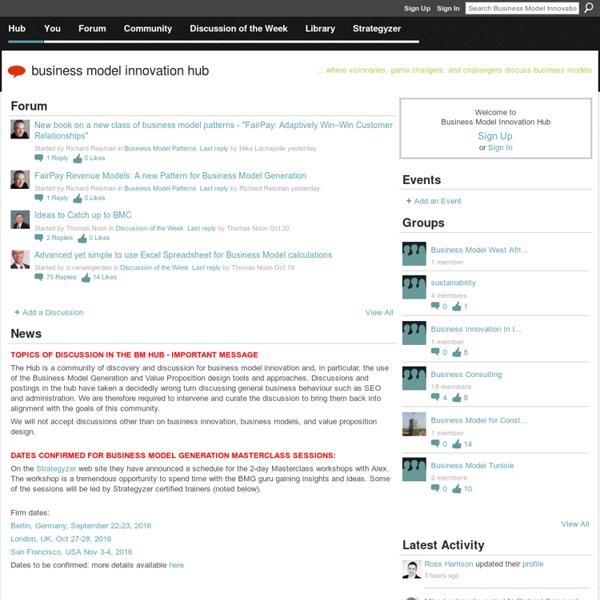Innovation Consulting Services
How can you chart a path that will lead to repeatable growth through innovation? Our work with VF Corporation—maker of Lee Jeans, Wrangler, North Face, and Nautica—shows the way. After a year in which revenue declined five percent, this global leader in branded apparel turned to us to help create a strategy to meet ambitious new growth goals. We began by auditing current innovation practices and bottlenecks.
Emerging Companies Perkins Coie, LLP
Developing a solid intellectual property ("IP") strategy is essential for emerging companies preparing for market entrance. A sharp understanding and tactical plan for protecting your IP is critical not only before you start, but also during the lifespan of the company. Good "IP hygiene" demands that IP is protected from the start of your enterprise.
Business process management
Business process management (BPM) is a field in operations management that focuses on improving corporate performance by managing and optimising a company's business processes.[1] It can therefore be described as a "process optimization process." It is argued that BPM enables organizations to be more efficient, more effective and more capable of change than a functionally focused, traditional hierarchical management approach.[2] These processes can impact the cost and revenue generation of an organization. Changes in Business Process Management[edit] Although BPM initially focused on the automation of business processes with the use of information technology, it has since been extended[by whom?] to integrate human-driven processes in which human interaction takes place in series or parallel with the use of technology.
Survey/Feedback Data-centric business models – Lukas Feuerstein
I currently write my master thesis on “Success factors of data-centric business models” at University of Regensburg (Germany) and in cooperation with Detecon Consulting. Data-centric business models try to describe emerging business models that are mainly based on leverage data and information exchange with users, communities and partners. As we have observed, companies that adopt a data-centric business model such as Google or Amazon, generate most of their revenues from handling and processing of data or information. A in depth overview over the methodology and also some examples for data-centric business models such as nike+, Goldcorp, social media aggregation and restaurant reviews can be found in the presentation here. Since the focus of my thesis is mainly on information and data-products we have created a framework called “Information Value Chain”(IVC) that is especially targeted at data and information processes of a business model. Thank you al lot.
Open innovation
Open innovation is a term promoted by Henry Chesbrough, adjunct professor and faculty director of the Center for Open Innovation at the Haas School of Business at the University of California,[1] in a book of the same name,[2] though the idea and discussion about some consequences (especially the interfirm cooperation in R&D) date as far back as the 1960s[citation needed]. Some instances of open innovation are Open collaboration,[3] a pattern of collaboration, innovation, and production. The concept is also related to user innovation, cumulative innovation, know-how trading, mass innovation and distributed innovation. “Open innovation is a paradigm that assumes that firms can and should use external ideas as well as internal ideas, and internal and external paths to market, as the firms look to advance their technology”.[2] Alternatively, it is "innovating with partners by sharing risk and sharing reward
Startup Lessons from Election Day 2012
After billions of dollars spent on ads, gigabytes of campaign emails and countless hours of productivity put into Nate Silver's polling blog, Election Day is finally here. But don't despair, entrepreneurs – there are plenty of lessons that your startup can take from the campaign trail. 1. “Strategery.” You can't predict the future but you can (and should) be as calculating as possible.
jBPM
jBPM is a flexible Business Process Management (BPM) Suite. It makes the bridge between business analysts and developers. Traditional BPM engines have a focus that is limited to non-technical people only. jBPM has a dual focus: it offers process management features in a way that both business users and developers like it. What does jBPM do? A business process allows you to model your business goals by describing the steps that need to be executed to achieve that goal and the order, using a flow chart. This greatly improves the visibility and agility of your business logic, results in higher-level and domain-specific representations that can be understood by business users and is easier to monitor.
50-50 "Partnerships" Only Work in Fairy Tales
One of the most common conversations I have with the founders of businesses involves how they determined a way to split the ownership amongst themselves. It is probably the first difficult decision new partners face together in starting a company. In many instances, the new founders decide that they are going to split ownership equally. If there are several founders, this may work out inadvertently. In other instances, the founders haven't even considered who should own what percentage of the company and statutorily, by default, ownership will be pro rata by the number of owners.
StartUp Guru Blog
About: Brian Tsuchiya Click on the picture below to find Brian’s full bio. Brian has been an entrepreneur for twenty years. During this time he has worked with, met, read about and studied thousands of entrepreneurs. This experience combined with his own inner journey and assessment created the fertile ground to discover both the four archetypes of entrepreneurs and the four stages of business evolution. In addition to coaching and mentoring select entrepreneurs Brian is leading the research team and writing his first book.
(Изображение «JPEG», 528 × 720 пикселов) - Масштабированное (90%)
New features Meet the new inbox New customizable tabs put you back in control so that you can see what's new at a glance and decide which emails you want to read and when. More about the new inbox



